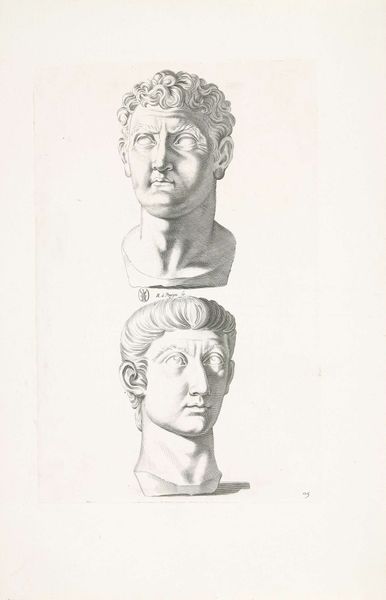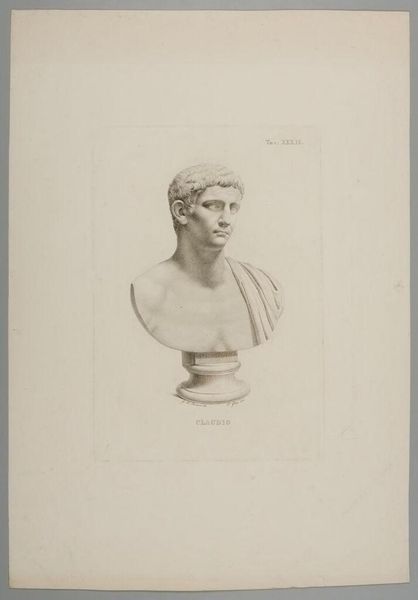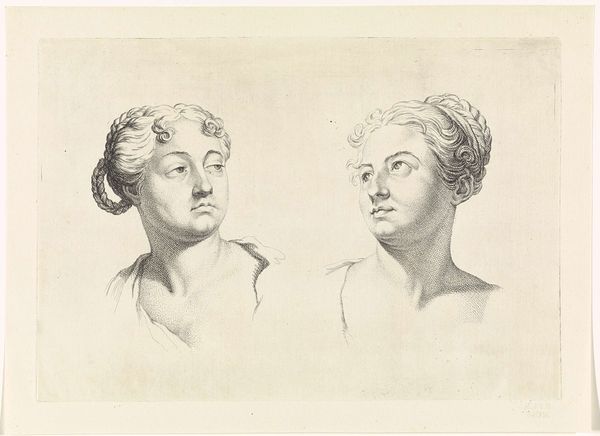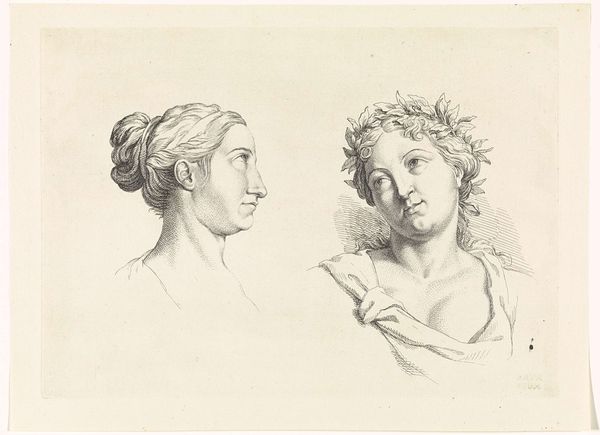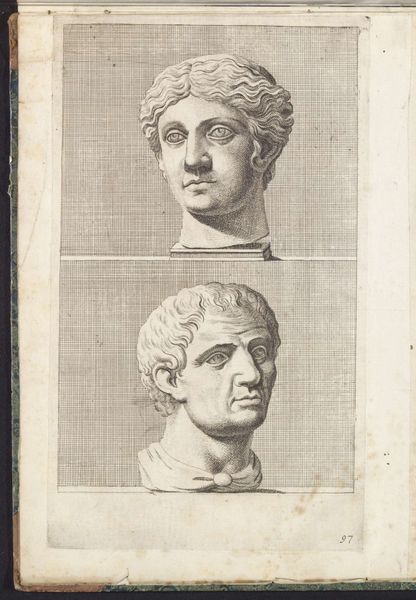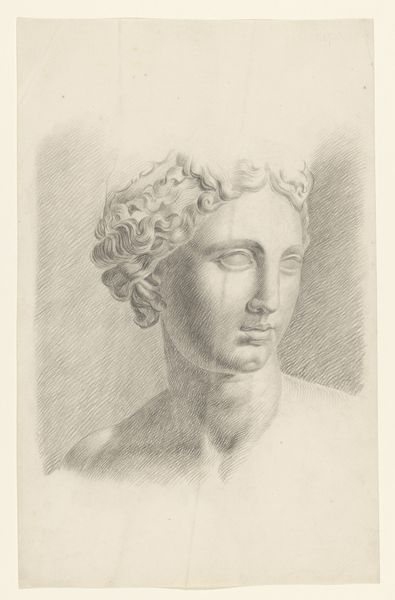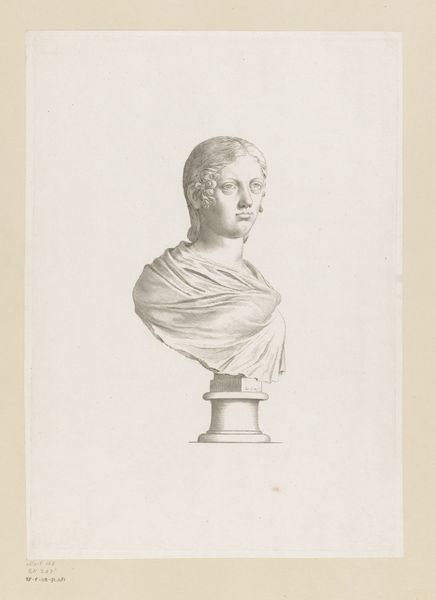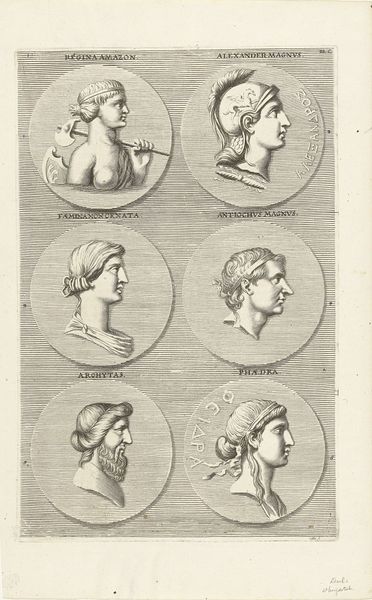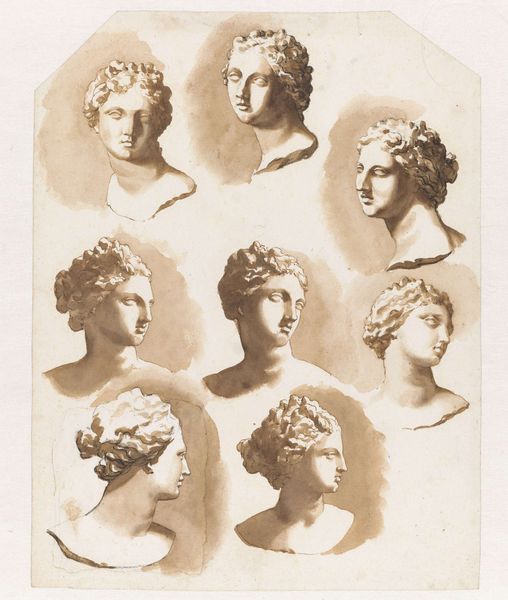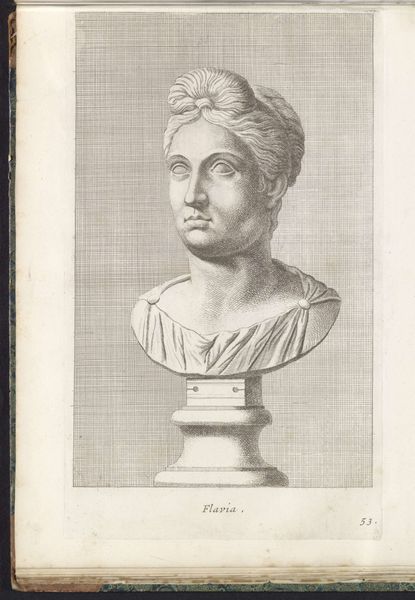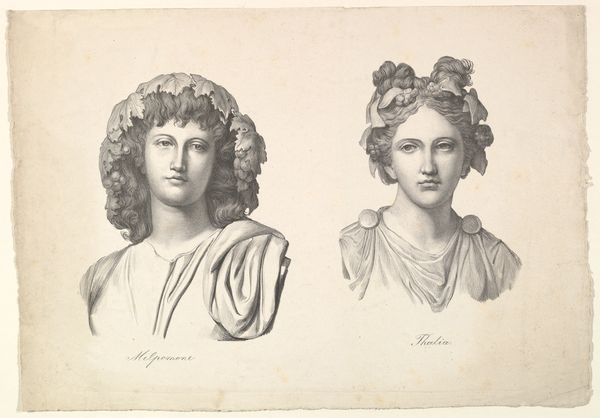
drawing, pencil
#
portrait
#
pencil drawn
#
drawing
#
facial expression drawing
#
pencil sketch
#
classical-realism
#
pencil drawing
#
ancient-mediterranean
#
pencil
#
portrait drawing
#
history-painting
#
academic-art
Dimensions: height 407 mm, width 239 mm
Copyright: Rijks Museum: Open Domain
Curator: Well, looking at these two ladies, it's like stumbling upon whispers from ancient bacchanals. Reinier van Persijn made this pencil drawing, “Twee bustes van bacchantes”, around 1640. It's currently housed here at the Rijksmuseum. Two busts, classical vibes, very academic in style, but tell me what strikes you? Editor: There's an odd serenity, isn't there? Despite them supposedly being bacchantes, wild followers of Bacchus, the god of wine, they appear composed, almost melancholic. The soft pencil strokes give them this ethereal quality, like memories fading into the paper. I mean, where's the party? Curator: That’s interesting because, for me, that juxtaposition is what draws me in. They’re contained, like knowledge, rather than unleashed. Consider how academic art, at that time, served as a visual encyclopedia for those who wanted to elevate their status. Mythological figures, done tastefully, added legitimacy. The artist created a subtle comment about those historical events by depicting them. It is not about debauchery; it is about its legacy! Editor: A curated chaos, then? I see it now. The busts, mimicking marble, become trophies of cultural refinement, little status symbols disguised as art. Look how precise the linework is, too, as if desperate to pin down something inherently fleeting and ecstatic. I still sense a tinge of regret beneath the surface. Curator: The control, the classicism - it’s all intentional. Remember that depictions of such subject matter was used to elevate a moral lesson - you will notice these "bacchantes" lack strong visual cues about being heavily intoxicated. And by portraying them, even if subtly tinged with "regret", as human, and refined, makes that story, that commentary, more relatable to an everyday audience. It wasn't so long after this time period that this became considered propaganda. How perceptions change, eh? Editor: It does, and that's the most exciting thing. Considering they reside at the Rijksmuseum speaks volumes. Now part of the Dutch cultural identity. I mean it goes to show art and its reception are products of their socio-political atmosphere as much as they are any intrinsic "beauty" they may have. Fascinating! Curator: Absolutely. It feels less about simple replication, more about legacy building, and isn’t that what the best museums and galleries hope to achieve? We strive to allow for continued stories to be built upon existing work and create a wider experience for visitors. Editor: True, a legacy built on re-interpretation! These serene bacchantes have truly got me thinking. Thanks for shedding some light on that world for me!
Comments
No comments
Be the first to comment and join the conversation on the ultimate creative platform.
